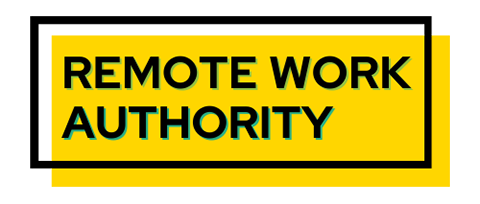Recent studies show that the productivity of full-time remote workers is lower than for those who work in an office. Too many distractions materialize which interfere with productivity. Some companies use productivity software to monitor workers, but what is tracked is only part of the job.The surveillance increases worker anxiety.
Long after many employers wanted to limit or end remote work, a nagging statistic made them reconsider. Studies showed that remote work was at least 13% percent more productive than in-office work. Now, new research from Stanford University shows that despite the advantages to employers and workers of allowing people to work from home or another location, activity drops by 10% or more when people are out of the office full-time.
New Productivity Studies
As reported in Forbes, the report found that while remote workers believed their productivity at home was 7% higher than working from the office, the evidence shows a 10 to 20% productivity drop. Researchers discerned the following patterns:
- Communication networks degraded over time and were not replaced
- Communication challenges made it more difficult to coordinate work
- As workers often multitask when working from home, creativity and teamwork are reduced
- The learning, mentoring, and feedback available to people in the office are less intense than for employees online.
- Lack of self-control and motivation
A study from Upgraded Points confirmed the Stanford findings that people spent time in front of their computers engaged in activities not devoted to work.
- 75% searched social media
- 70% engaged in online shopping
- 53% watched TV shows or movies
- 32% planned trips

In addition, they spent part of the standard workday doing other things away from the computer.
- 72% did household chores
- 37% did errands
- 22% napped
- 23% went to the doctor
- 12% engaged in drinking
When specifically asked, workers had opinions on their productivity.
- 65% of women and 55% believe they are productive at home.
- 51% said that being able to set their own schedule made them more productive. (Mmhmm study)
- 42% of respondents felt more productive working from home, and 43% prefer the office.
- On busy days, those working from the office felt 11% more likely to feel productive.
- 33% report feeling less productive when collaborating with remote or hybrid workers than onsite workers
However, about 13% of people reported only working three to four hours per day when working from home.
Employers are quick to jump on work laziness more than on failure to provide satisfactory means of communicating when assessing the productivity of full-time remote workers.
Considerations About Productivity In A Remote Work Era
Despite productivity statistics being out of sync with perceptions of productivity, three things are true:
1. Workers like to be remote at least part of the time.
For many workers, hybrid setups are ideal. Being in the office regularly facilitates cooperation and teamwork, while on their days away from the office, workers can do other tasks that do not require the team. They can hold meetings with coworkers when needed on their remote days. Research, much of it substantiated by the same academics responsible for the current one noted the hybird work did not threaten productivity at all.
2. The success of remote work depends on the company trusting workers.
Bosses must be able to give up control over the performance of tasks and believe that workers will get the job done, even if, on a given day, they work nontraditional hours. For example, a parent might go on a field trip with her child’s class for part of her day and makeup missed work hours in the evening over the course of a couple of days.
3. Companies’ attempts to measure productivity must consider the whole job.
Many facets of a job requiring soft skills are not considered measurable, so large portions of jobs do not appear to be a productive use of time when employees are in the process of doing them. Productivity statistics gathered from tracking software or the number of workpieces turned in may be incomplete.
To be comfortable with this degree of flexibility, bosses must measure productivity by progress and completion of tasks, not just presence in the office. Based on what is happening in many countries around the country, trust is a major issue as companies want to make sure that workers are doing their job and doing it on the schedule the company wants

Productivity Software Vs. Trust
Some companies attempt to verify this through productivity software that might track time spent on specific tasks. When using tracking software, employers must be honest about it. Studies show that workers become resentful and find ways to circumvent the system when software is in place.
It is reasonable that companies want to make sure people are working and producing results, but productivity software sometimes sends the wrong message. According to a recent Fortune article, a group of studies on employee surveillance shows that employees do not take kindly to having their every move checked by their remote bosses. Such software tracks time usage, not completion of tasks or the value of the work product
A Glassdoor study of 2,300 remote workers found that while 36% did not know if they were monitored, 41% felt less productive when their work devices were monitored. Accounting professionals were indifferent to the monitoring, but those in finance and tech claimed it negatively affected their productivity.

Productivity Tracking Hits Middle And Upper Management
While monitoring is expected and widespread in lower-paying jobs, even in companies like Amazon, the New York Times reports that eight of the ten largest private US employers track productivity methods. Some of the big firms, such as Morgan, Barclays Bank, and United Healthcare, do so in an attempt to justify bringing people back to the office.
The surveillance continues even in higher-paying jobs. A senior vice president, newly hired at a bank, found her paycheck lower than expected. She discovered that she has monitoring software on her computer that records only active online time when computing her compensation period time. It ignored the time she spent offline in activities such as reading printouts, planning, or doing computations or drafts on paper – all essential parts of her job. Even though her hourly rate was $200 per hour, she had to appeal to be paid if she forgot to turn on her time tracker.
The Times enumerated examples of social workers, engineers, doctors, chaplains, lawyers, and academic administrators having their productivity tied to keyboard strokes. Even those in positions involving counseling or customer service found that too much time unrelated to keystrokes triggered reprimands, snarky emails, lower compensation and bonuses, and termination.

How Workers React To Productivity Tracking
The use of this productivity software intimidates workers, makes them angry, and makes them resort to workarounds. The banking executive profiled by the Times often did mindless busy work, so her clicks showed she was productive. The complaints lower-level white-collar workers and many blue-collar workers have voiced for years remain true. Tracking software monitors only the quantitative aspects of their jobs.
As a result, some workers are installing mouse jiggers that simulate mouse clicks. An HBR study confirmed that employees who responded to assaults on their dignity were more likely to “substantially more likely to take unapproved breaks, disregard instructions, damage workplace property, steal office equipment, and purposefully work at a slow pace when they knew they were being watched.”
The user productivity software by some companies is a blatant attempt to get people back to the office. As Paul Wartenberg, who installs monitoring systems for clients, including accounting firms and hospitals, said, “If we’re going to give up on bringing people back to the office, we’re not going to give up on managing productivity.”
The only definition of productivity many companies accept is doing a high number of tasks per hour regardless of complexity and regardless of how much interaction is needed,


Do These Statistics Tell The Whole Story About Productivity Of Full-Time Remote Workers?
Are remote workers as productive as onsite workers? Should companies use time-tracking software to verify productivity?
Remote workers may be prone to distraction, but the studies cited do not question how much time onsite workers waste on activities such as online games, shopping, and social media. It is likely that office workers often engage in unrelated computer activity, even from the office.
The stats might also be a commentary on the fact that when you take away breaking lunchtime, smoke breaks, conversations around the water cooler or cubicle, and unnecessary meetings, the workday is longer than it takes to accomplish the work. Maybe some jobs can be completed in the 3 or 4 hours a day that some remote workers claim to spend.

Online workers with flexible hours might engage in other non-work activities during the day. They might work other times during the day or week to make up for running an errand or enjoying an occasional long lunch with friends. Some workers, however, take advantage of having no bosses around and manipulate the system.
The question of using tracking software to verify productivity is complex. Companies have the right to confirm that workers are earning their pay, but the software needs to capture the nuance of the job, the important elements that are not easily tracked through keyboard strokes.
While the latest round of statistics seemingly verifies that workers are more productive in the office, productivity measurement is flawed. As productivity software does not always measure actual work, its impact on a company’s relationship with its workers may be detrimental to productivity.


